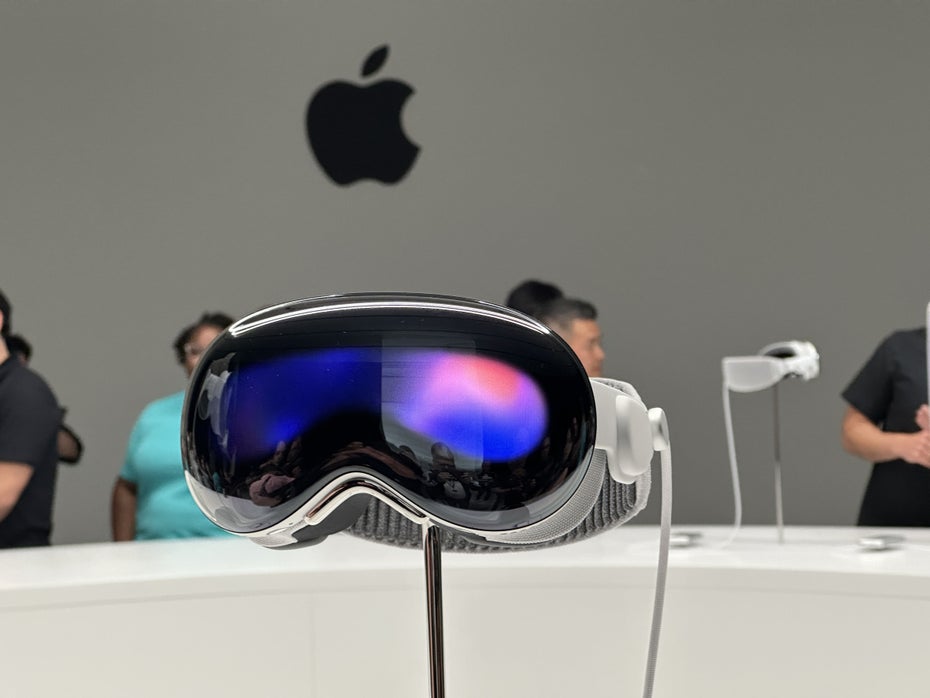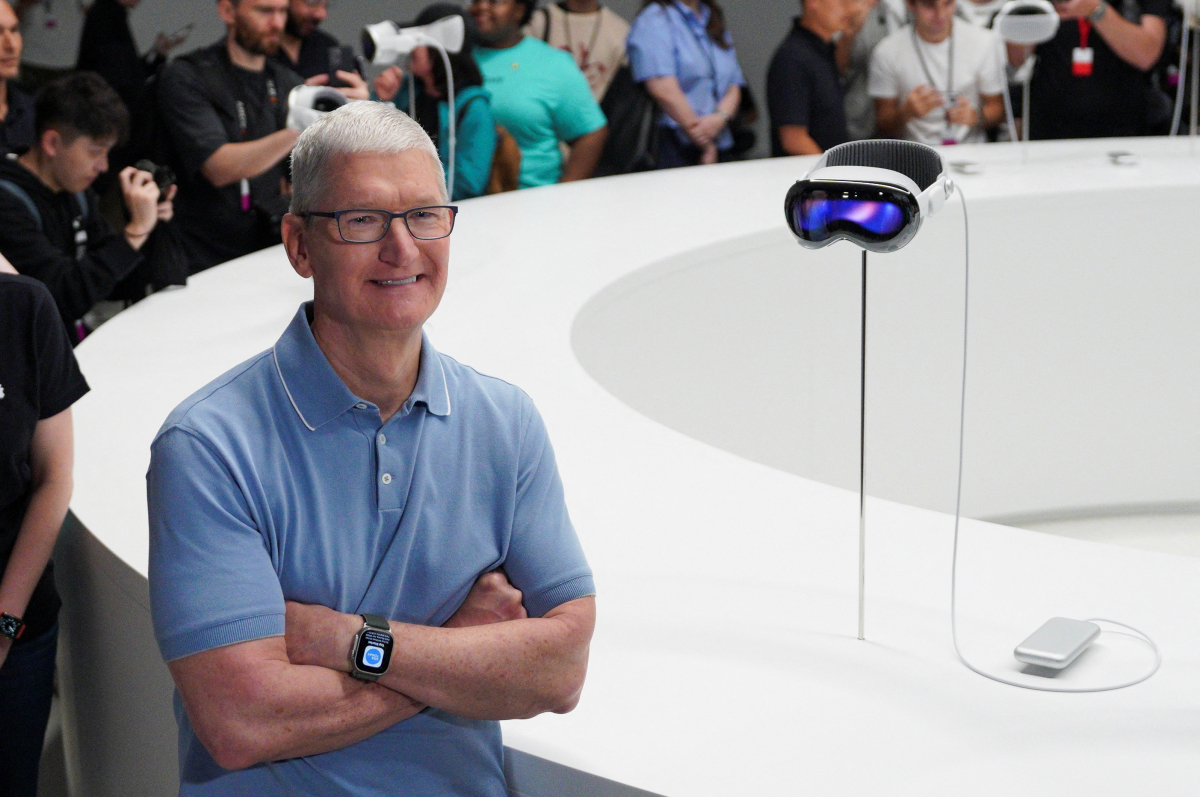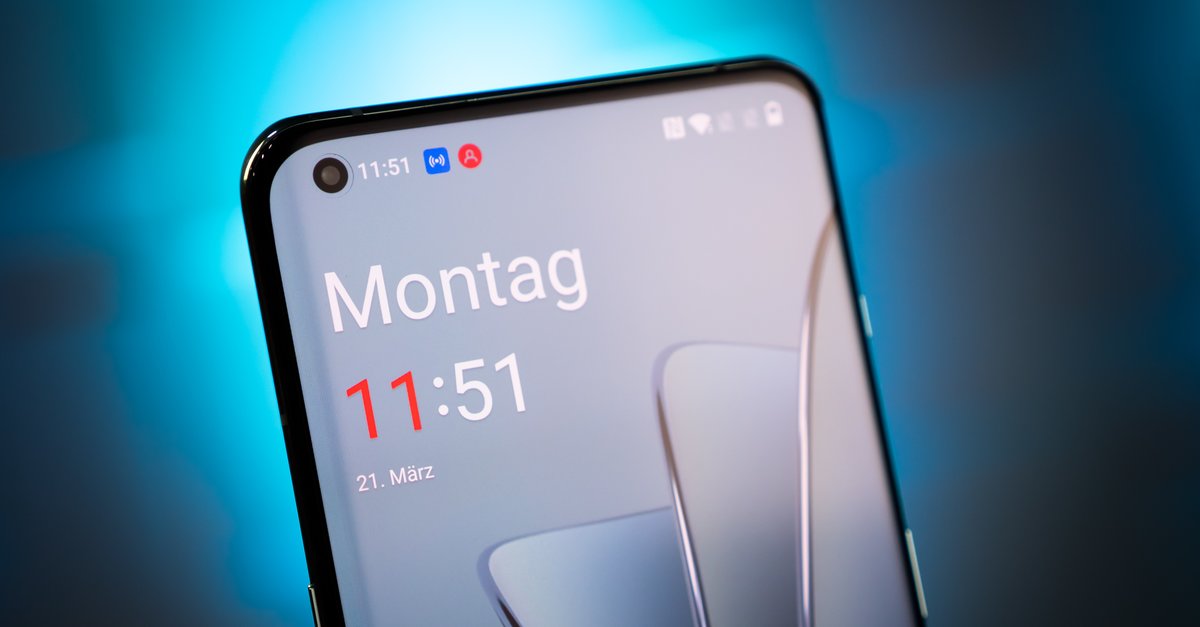Vision Pro: Apple doesn’t give a damn about the Metaverse
Apple is said to have developed Vision Pro for seven or eight years and certainly threw countless prototypes on the garbage until the AR headset unveiled during the WWDC 2023 keynote met the expectations of Apple management and, above all, CEO Tim Cook.
Apple Vision Pro with cable and battery pack. (Image: Apple)
The result is quite impressive and, from a technical point of view, outshines everything that Meta, Microsoft, HTC or Sony have done so far in terms of mixed or virtual reality. In addition to the product design, Apple has installed ultra-high-resolution screens, umpteen sensors and cameras, as well as an outward-facing OLED screen. Headsets to bypass without sacrificing headset picture quality.
Also, the Apple headset doesn’t require controllers, which are pretty much standard at the moment for precise interaction with the virtual world on Metas or Sony’s headsets and more. Apple’s headset can be easily operated with finger gestures, which is thanks to the software and the many outward-facing sensors. In addition, the inward-facing sensors help ensure that a glance at an icon or an app controls it. The headset can also be operated by voice.
Editor’s Recommendations
According to the first impressions of various tech media, the whole thing works surprisingly well and precisely after a short period of getting used to it.

Apple Vision Pro. (Photo: Picture Alliance)
As far as the usage scenarios Apple envisages for the headset, the focus is weighted completely differently than that of Zuckerberg’s Metaverse. While the meta boss imagines walking in a digital image of the real world in which people meet, exchange ideas and buy or consume things, Apple is pursuing other goals with the headset.
Accordingly, the word Metaverse was not mentioned once during the presentation of the headset. Interestingly, this was already predicted by Bloomberg reporter Mark Gurman in early 2022 – a year and a half before WWDC 2023. He also said at the time that the idea of a fully virtual world for users to escape to – like Meta’s future vision – was taboo to Apple.
Apple envisages the possibilities of a notebook or iPad as intended uses for the Vision Pro, but with room-filling, floating screens. It is therefore possible, for example, to connect the headset to a Macbook thanks to the seamless integration of the ecosystem and to display the applications in the room as virtual windows and to write with a hardware keyboard.
In addition, thanks to the cooperation with Disney, the headset can be used as a home cinema. A huge cinema screen appears before the eyes, which is either embedded in the living room at home or in a virtual space that makes the real world disappear. Video calls – but not as comic-like avatars as with Meta, but a real-looking image of the wearer – are also possible, as is collaboration with colleagues on documents – Microsoft is also on board, by the way.
The intended uses ultimately cover what Apple has been offering for years, but in a new setting. Therefore, Apple categorizes the headset as “spatial computing” and can therefore be interpreted more as a redefinition of the personal computer.
Whether Apple will be successful with this approach cannot be predicted at this time. Because the first headset will not be available until the beginning of 2024 and then initially only for the USA. Other countries will follow later. This strategy indicates that Apple wants to approach the introduction of the new product category cautiously, especially since the high price of the headset should deter the general public from a rush for similar new iPhones anyway. Because Apple’s Vision Pro costs a whopping 3,500 US dollars, which should easily correspond to 4,000 euros on the European market.
We bet that the first generation of the spatial computer is initially intended for developers anyway, in order to fill the app ecosystem with life. It is only in a year or two that Apple will bring the next, cheaper generation of the headset onto the market, they say.
By then, it should also have become clear what the first buyers will primarily use the headset for, and Apple will optimize and expand these features, similar to the Apple Watch. Time will also show whether such a headset from Apple will be successful and bring the entire mixed reality industry out of the valley of tears. The sales figures for this product category are currently declining.



